I’ve built a bunch of conversions out of a vintage folding Zeiss 520/15. Most of these 6×12 cameras end up with a 65mm f/8 lens. It wasn’t until I was commissioned to build a similar 6×9 camera that the format caught my attention. The client wanted a 65mm to get the feel of his 28mm lens on a 35mm camera. Here is the camera I came up with for him.
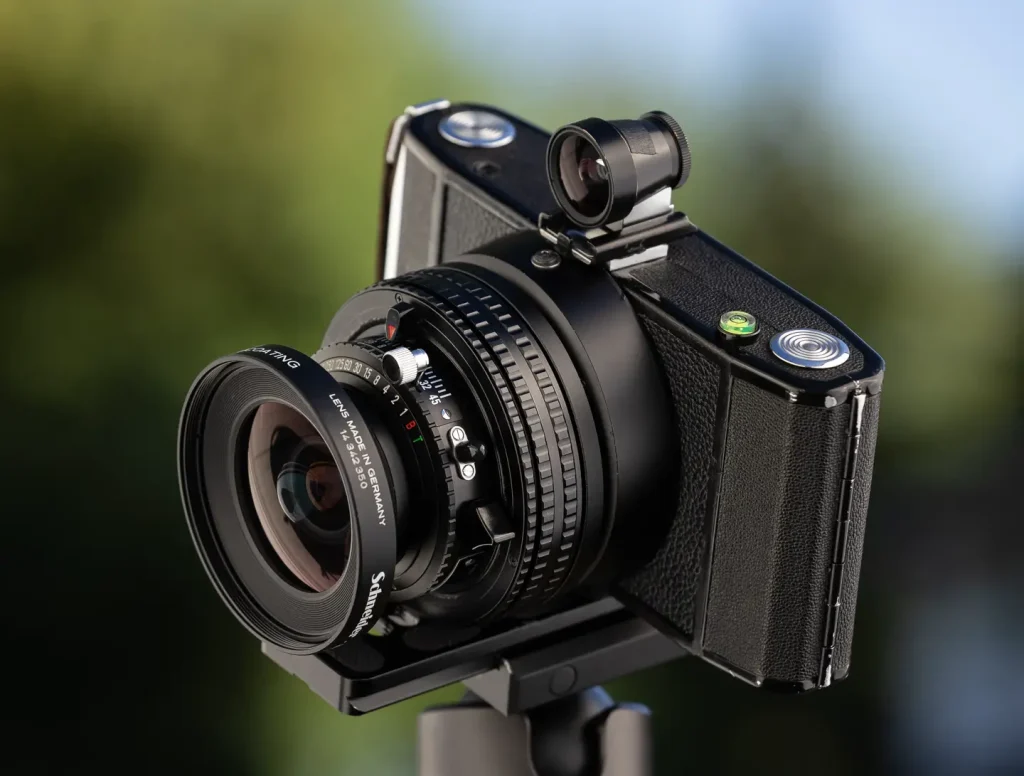
Once I complete and delivered the camera, I realized how much I really liked the Zeiss 6×9 body. The 6×9 fits in a digital camera bag easier than a similar 6×12. This led me to build one for myself. I was unable to find a clean donor body. With paint striper, the leather and 80 year old paint and an all silver conversion became an idea.
Finding a clean and usable 47mm lens proved to be a bigger challenge than I was expecting. When I build the 6×12 conversions, the donor camera bodies are hard to find. Clean 65mm f/8 Super Angulon are quite plentiful. After almost six months a super clean 47mm f/5.6 Super Angulon surfaced and I was in business. Not all custom cameras come together looking this good. Some better looking than others, this one is a rare looker! In addition, it fits in a camera bag beside its modern digital counterparts perfectly.
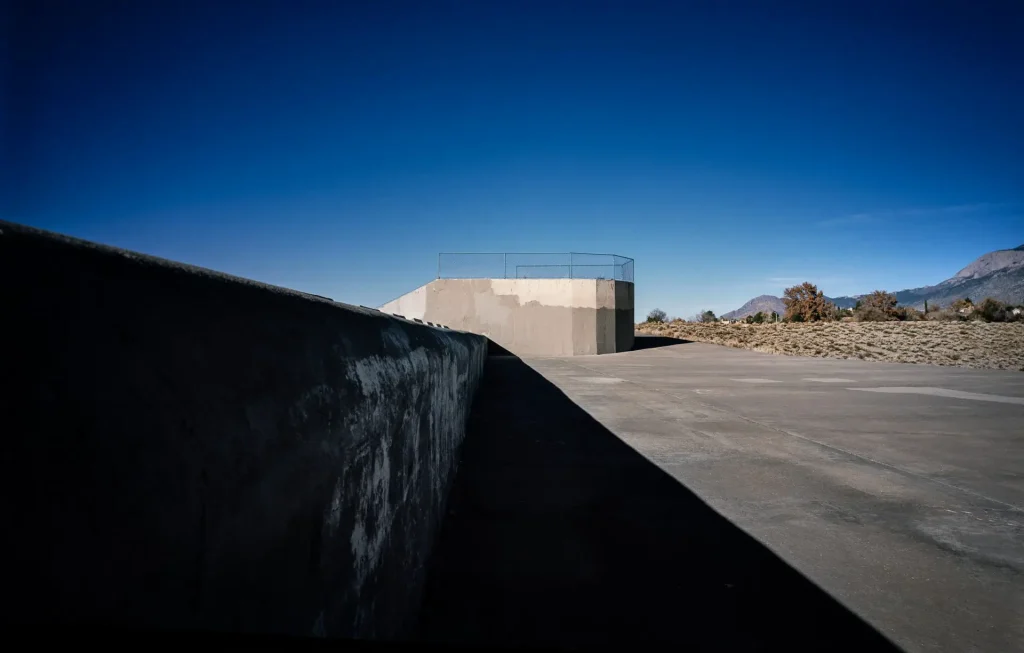
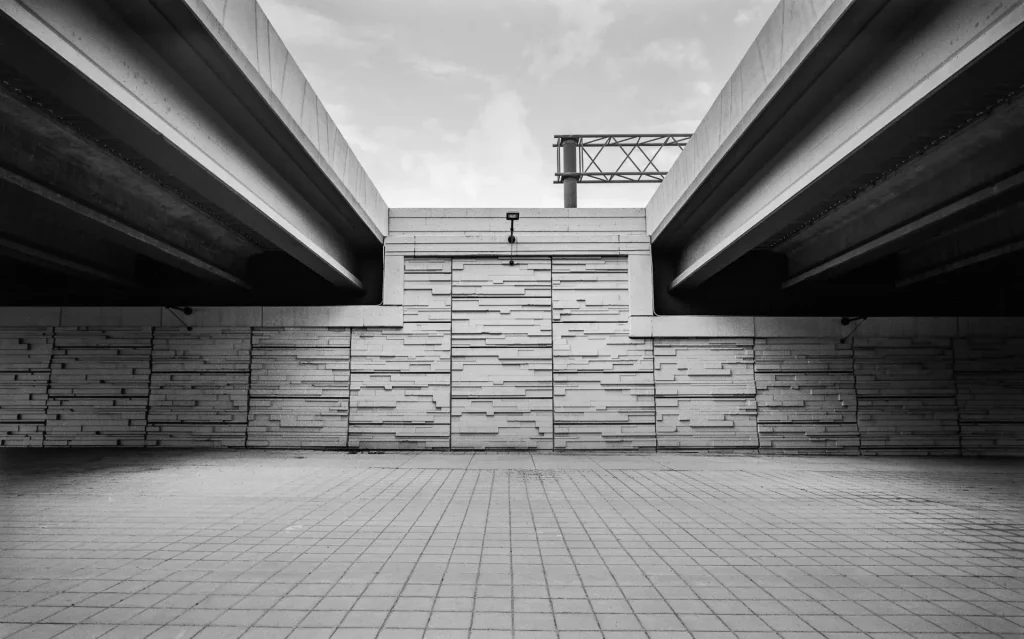
Liking my personal chrome camera so much that when a clean f/8 Super Angulon presented itself, I had to buy it. Using my camera as a template, I emerged from my shop with a shadow of its shiny chrome brother. Both cameras are ‘scale’ or ‘zone focused’ with helical focusing mounts between the Super Angulon and the body. I’ve mounted an Arca plate perpendicular to the camera body which serves two purposes. It keeps the camera body flat when sitting on a flat surface but equally important, it keeps pressure off of the helical when the camera is stuffed in a camera bag. The camera gives you eight frames on a roll of 120 film. Film advance is via a red window on the back door. Because of the red window advance, 220 film cannot be used.
All of my recent custom cameras use the same low profile accessory shoe for the finder. The spring accessory shoe holds the viewfinder much tighter and more secure than a flash shoe.
As a finishing touch, I remembered picking up a 49mm Linhof branded chrome lens shade. After a quick search (and ordering a 40.5 to 49mm step up ring on Amazon which is SO much faster than waiting for one from eBay to show up) the chrome shade on the chrome lens with everything else on the camera blacked out looks really good. Instead of painting the lens board I covered it with with black leather so it would match the camera even better.
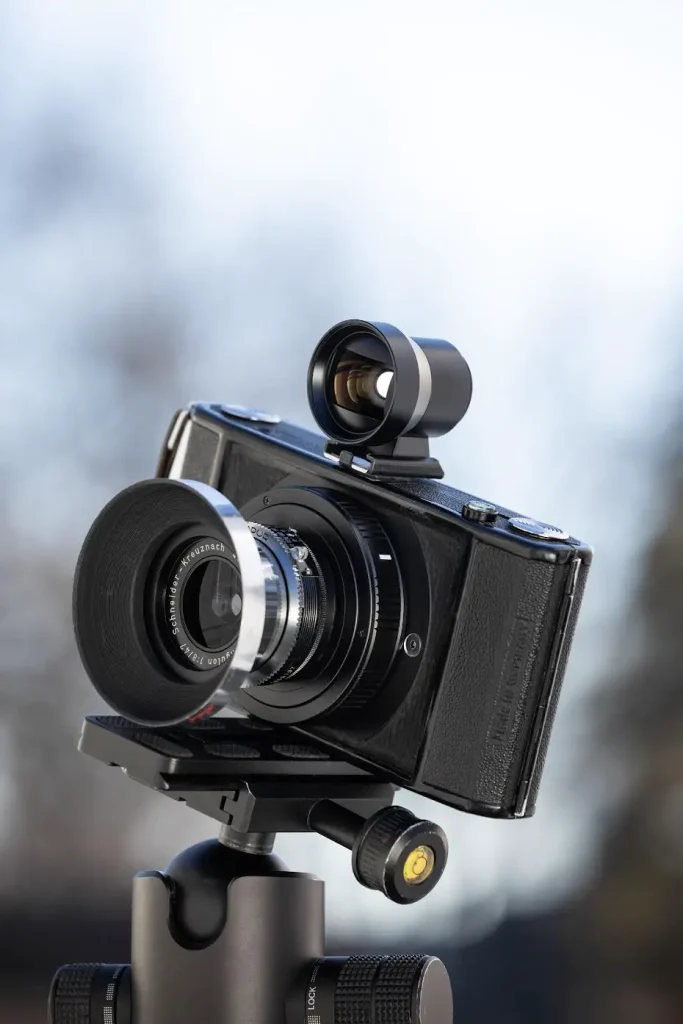
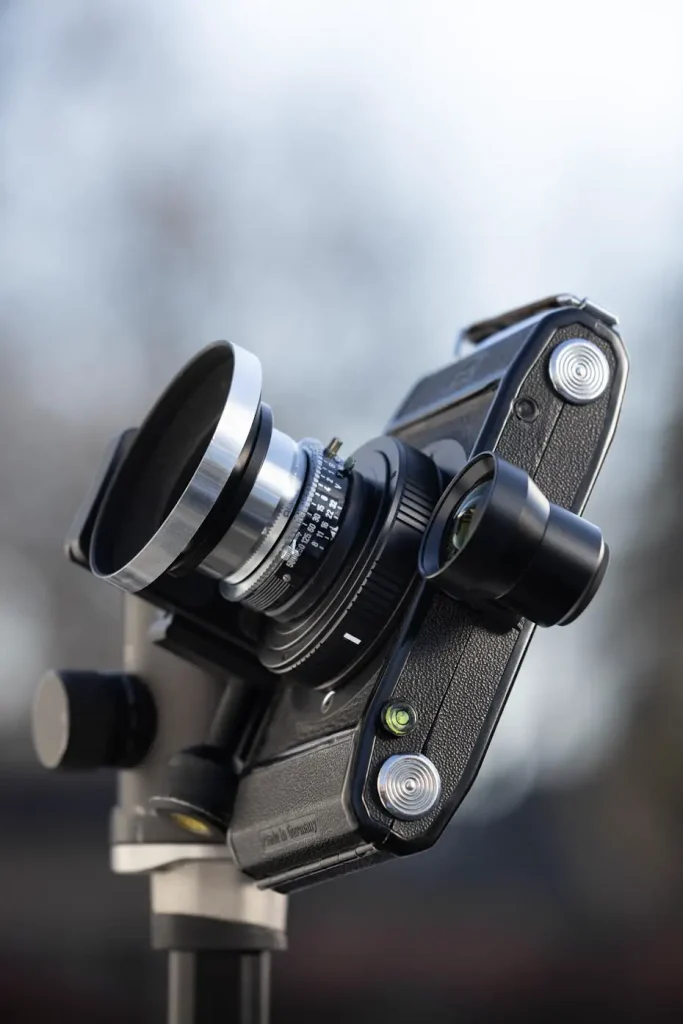
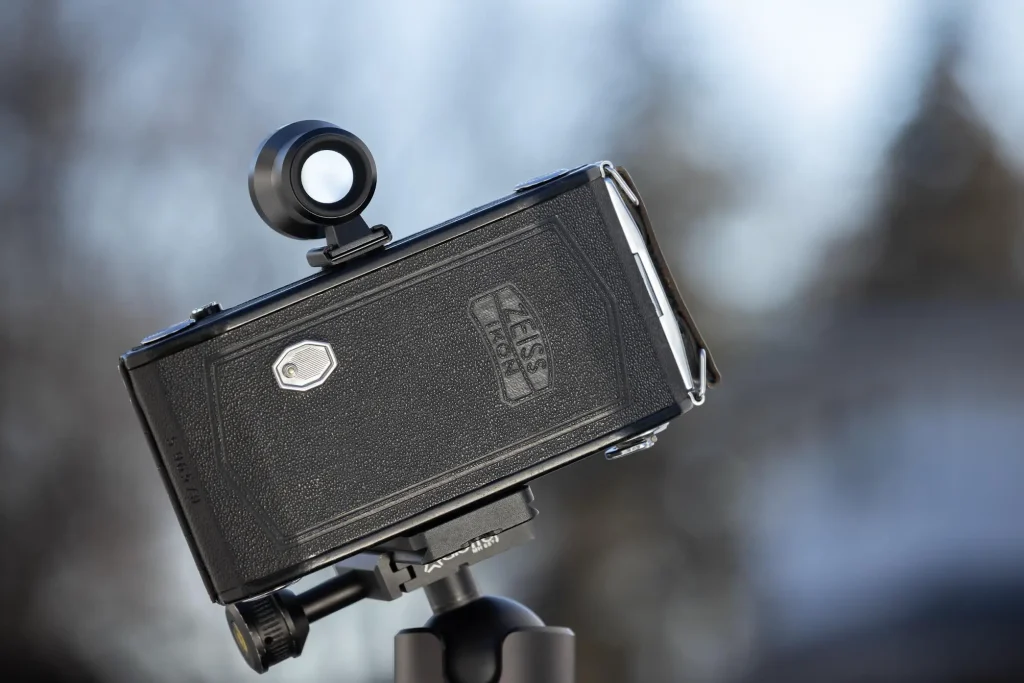
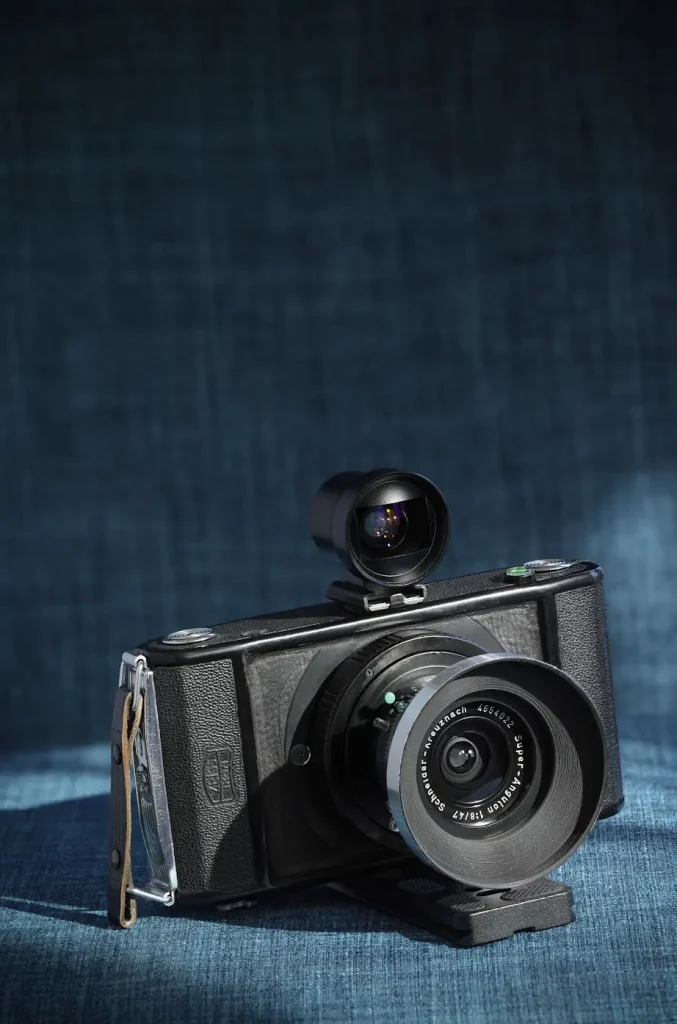
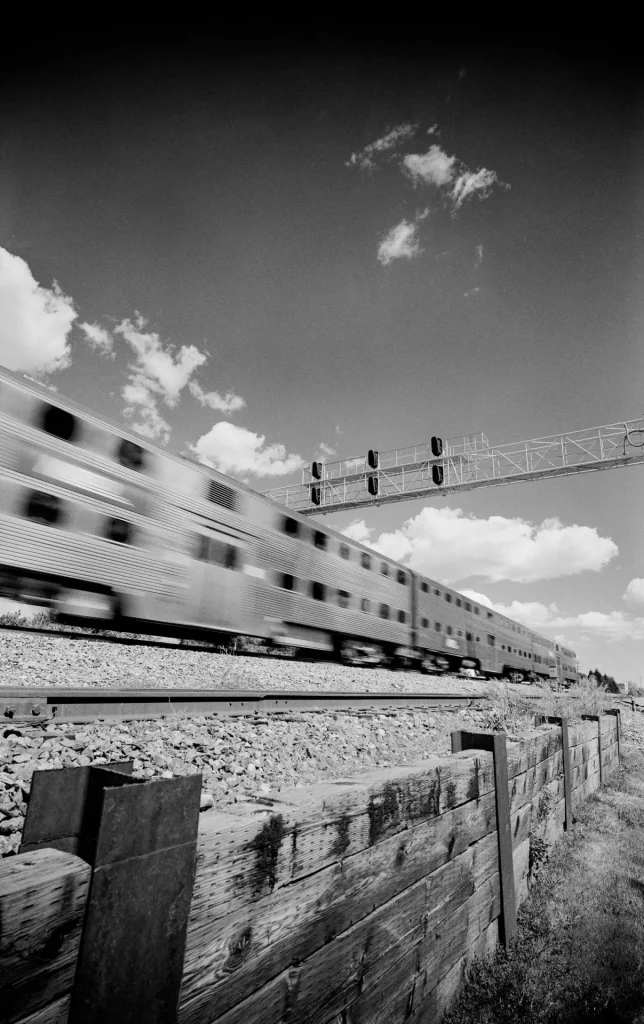
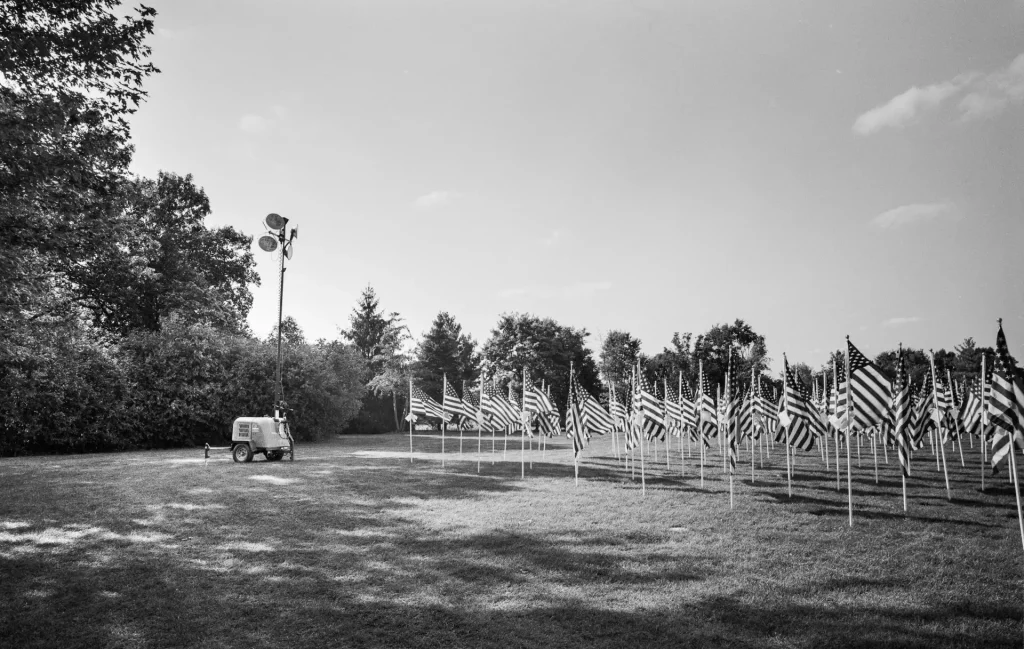
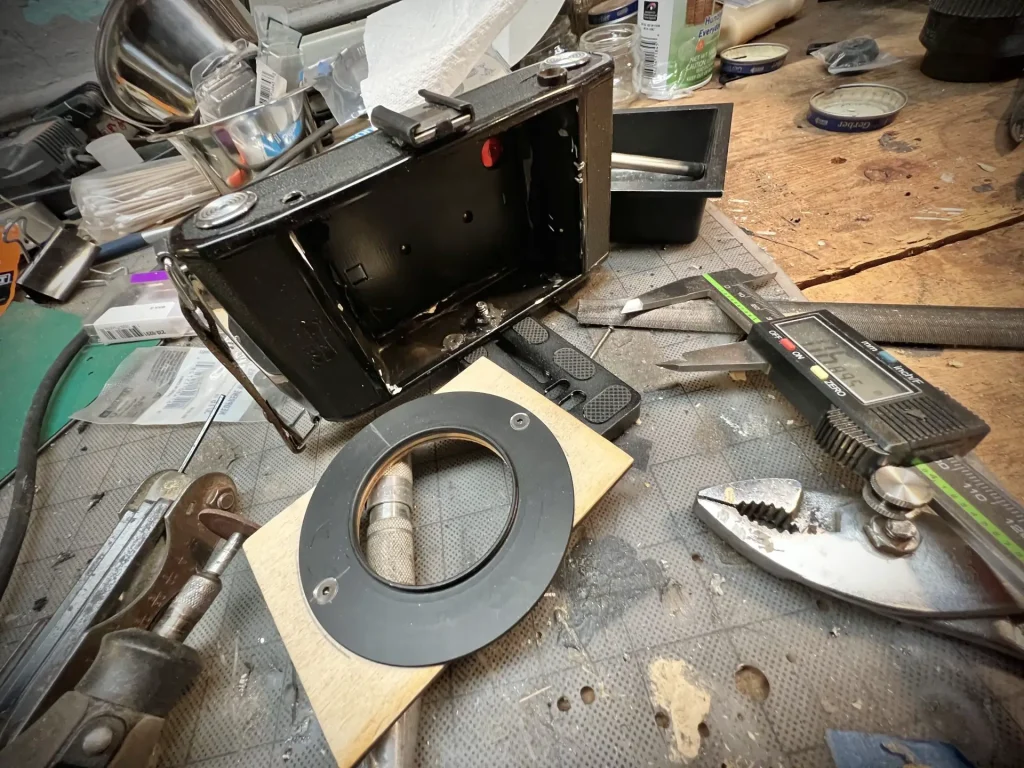
It’s a terrific little camera designed to be shot alongside a modern digital system. Of course, it holds its own in the driver’s seat as well! I shoot film alongside digital and work to make my film cameras as simple to use as possible.
Some of my other medium and large format cameras can be seen here.
I’m so happy to see a refreshed interest in film cameras. I kinda wish the prices of older film cameras wasn’t going up along with the interest. Shooting film is in my dna, I’ll always shoot it in some capacity.
Thanks for reading, you can see additional imagery on Instagram
Share this post:
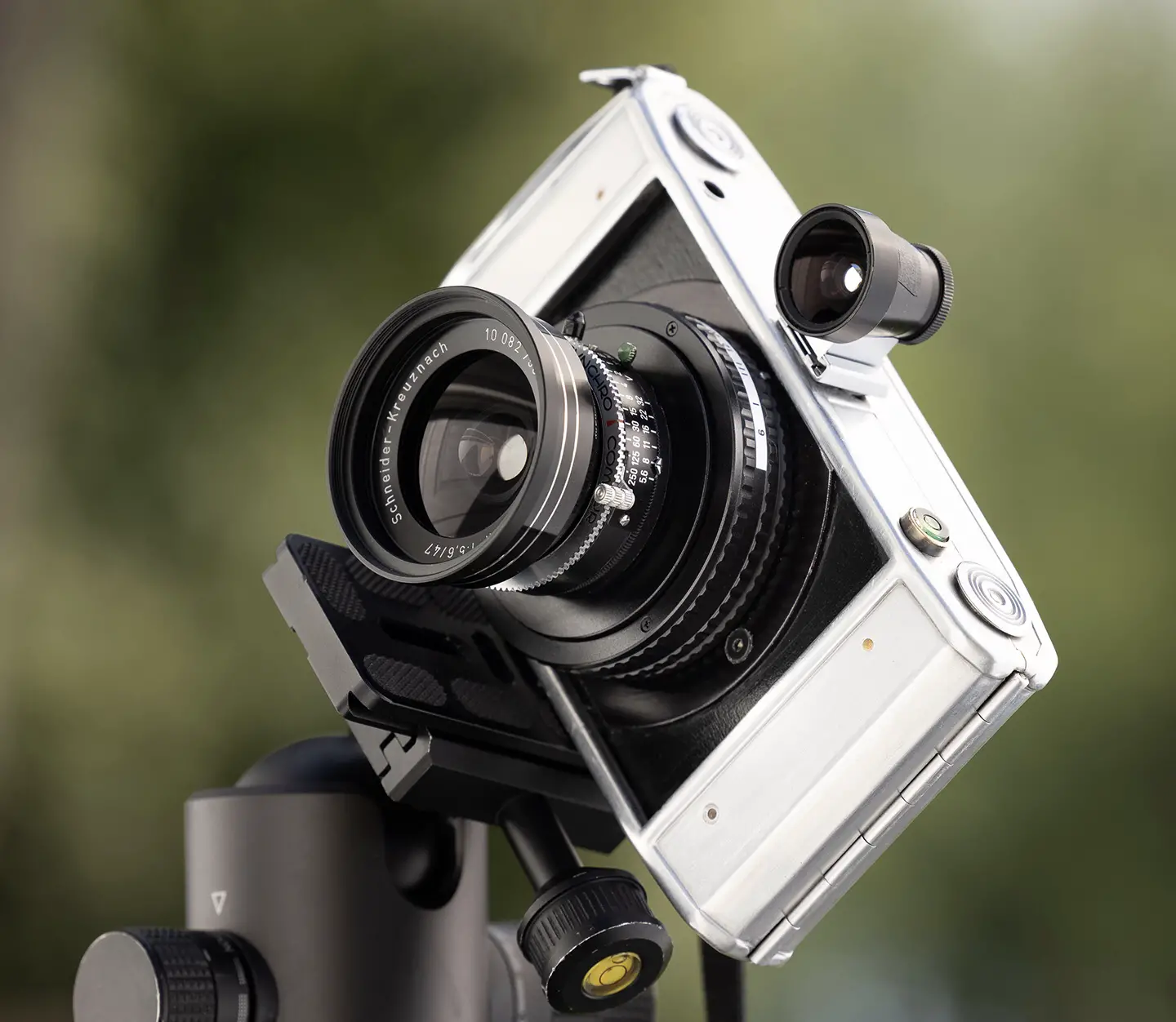








Comments
Matt Bigwood on A Custom Compact And Affordable 6×9 With A Heart For Travel – By Dirk Fletcher
Comment posted: 15/02/2022
Comment posted: 15/02/2022
Kurt Ingham on A Custom Compact And Affordable 6×9 With A Heart For Travel – By Dirk Fletcher
Comment posted: 15/02/2022
Comment posted: 15/02/2022
Comment posted: 15/02/2022
Comment posted: 15/02/2022
TobyVPhoto on A Custom Compact And Affordable 6×9 With A Heart For Travel – By Dirk Fletcher
Comment posted: 15/02/2022
I’ve always wanted a more modern version and this one looks like my dream.
Thank you. Nice work.
Lee on A Custom Compact And Affordable 6×9 With A Heart For Travel – By Dirk Fletcher
Comment posted: 15/02/2022
Arthur Gottschalk on A Custom Compact And Affordable 6×9 With A Heart For Travel – By Dirk Fletcher
Comment posted: 15/02/2022
Comment posted: 15/02/2022
Dan Mountin on A Custom Compact And Affordable 6×9 With A Heart For Travel – By Dirk Fletcher
Comment posted: 15/02/2022
Would some of the Russian folders and lenses be good donors? As someone who is very new to the custom camera world and fascinated with your builds, (I clicked on the link to you site and looked at a couple of your builds), I’m interested in your thoughts. While not of the same quality as their German counterparts, I’d think that from a cost standpoint, Russian donor hardware would be a great place to start experimenting with. What do you think?
Comment posted: 15/02/2022
Phildjii on A Custom Compact And Affordable 6×9 With A Heart For Travel – By Dirk Fletcher
Comment posted: 15/02/2022
Comment posted: 15/02/2022
Russell Young on A Custom Compact And Affordable 6×9 With A Heart For Travel – By Dirk Fletcher
Comment posted: 16/02/2022
What finder are you using?
That's a beautiful camera.
Comment posted: 16/02/2022
Bud Sisti on A Custom Compact And Affordable 6×9 With A Heart For Travel – By Dirk Fletcher
Comment posted: 16/02/2022
Comment posted: 16/02/2022
Graeme on A Custom Compact And Affordable 6×9 With A Heart For Travel – By Dirk Fletcher
Comment posted: 16/02/2022
John Semarge on A Custom Compact And Affordable 6×9 With A Heart For Travel – By Dirk Fletcher
Comment posted: 17/02/2022
Comment posted: 17/02/2022
Film Friday: Building a custom 6×9 camera using an old Zeiss camera and 47mm Scheider-Kreuznach lens: Digital Photography Review – TechReviewJournals on A Custom Compact And Affordable 6×9 With A Heart For Travel – By Dirk Fletcher
Comment posted: 18/02/2022
Alex on A Custom Compact And Affordable 6×9 With A Heart For Travel – By Dirk Fletcher
Comment posted: 18/02/2022
Comment posted: 18/02/2022
Film Friday: Building a custom 6x9 camera using an old Zeiss camera and 47mm Schneider-Kreuznach lens: Digital Photography Review on A Custom Compact And Affordable 6×9 With A Heart For Travel – By Dirk Fletcher
Comment posted: 18/02/2022
Film Friday: Building a custom 6x9 camera using an old Zeiss camera and 47mm Schneider-Kreuznach lens on A Custom Compact And Affordable 6×9 With A Heart For Travel – By Dirk Fletcher
Comment posted: 18/02/2022
Movie Friday: Constructing a customized 6×9 digital camera utilizing an outdated Zeiss digital camera and 47mm Schneider-Kreuznach lens: Digital Pictures Evaluate | Universelol on A Custom Compact And Affordable 6×9 With A Heart For Travel – By Dirk Fletcher
Comment posted: 21/02/2022
Peter on A Custom Compact And Affordable 6×9 With A Heart For Travel – By Dirk Fletcher
Comment posted: 19/03/2022
Duncan Gruer on A Custom Compact And Affordable 6×9 With A Heart For Travel – By Dirk Fletcher
Comment posted: 22/07/2022
Dirk Fletcher on A Custom Compact And Affordable 6×9 With A Heart For Travel – By Dirk Fletcher
Comment posted: 22/07/2022
Thomas on A Custom Compact And Affordable 6×9 With A Heart For Travel – By Dirk Fletcher
Comment posted: 05/11/2022
I shoot some 4x5 with a Nikkor-w 150mm and I've been meaning to try making a usable 6x9 camera with it for ages.
Thanks!
Thomas on A Custom Compact And Affordable 6×9 With A Heart For Travel – By Dirk Fletcher
Comment posted: 06/11/2022
I shoot some 4x5 with a Nikkor-w 150mm and I've been meaning to try making a usable 6x9 camera with it for ages.
Thanks!
Dirk on A Custom Compact And Affordable 6×9 With A Heart For Travel – By Dirk Fletcher
Comment posted: 30/11/2022
Dirk